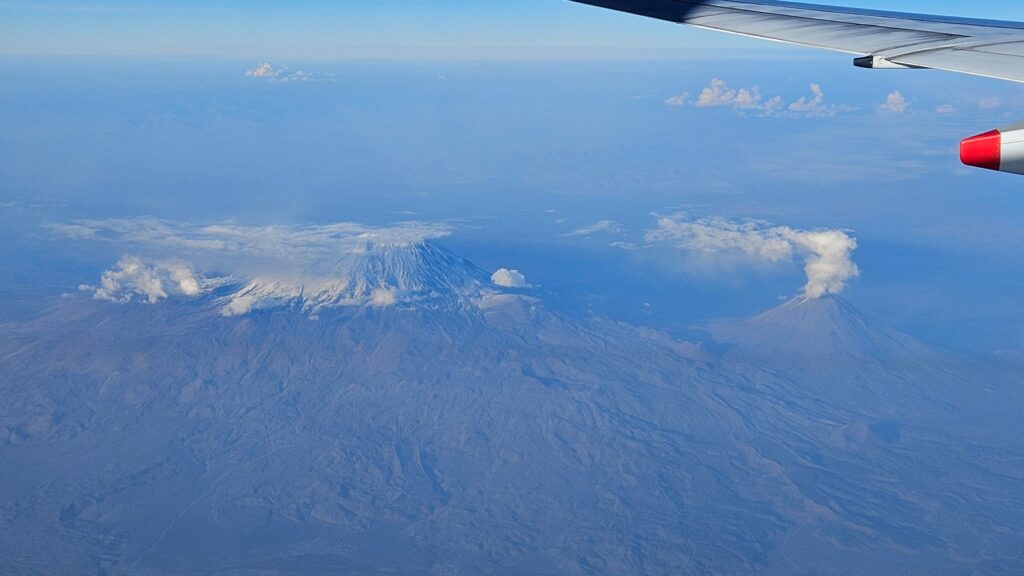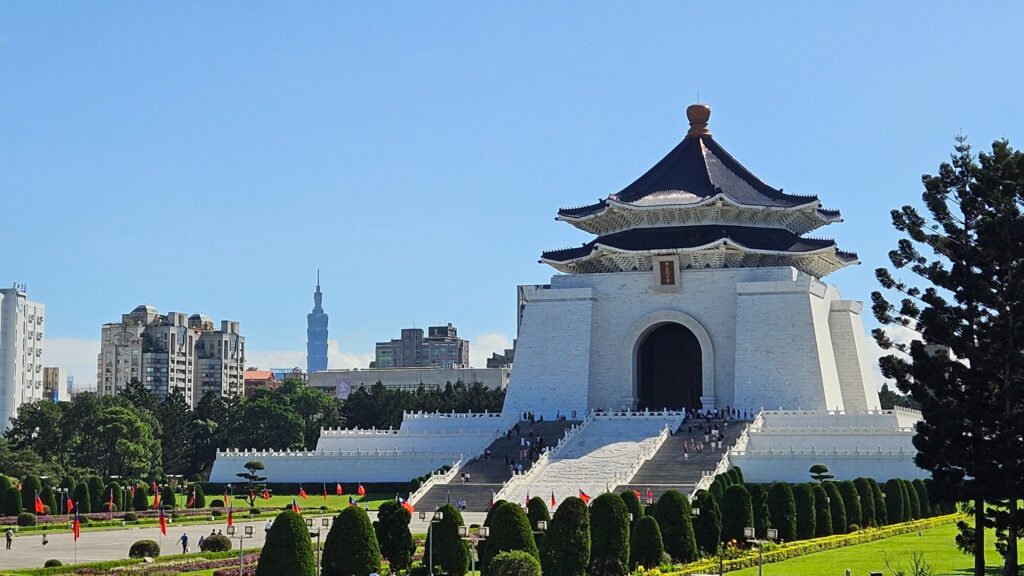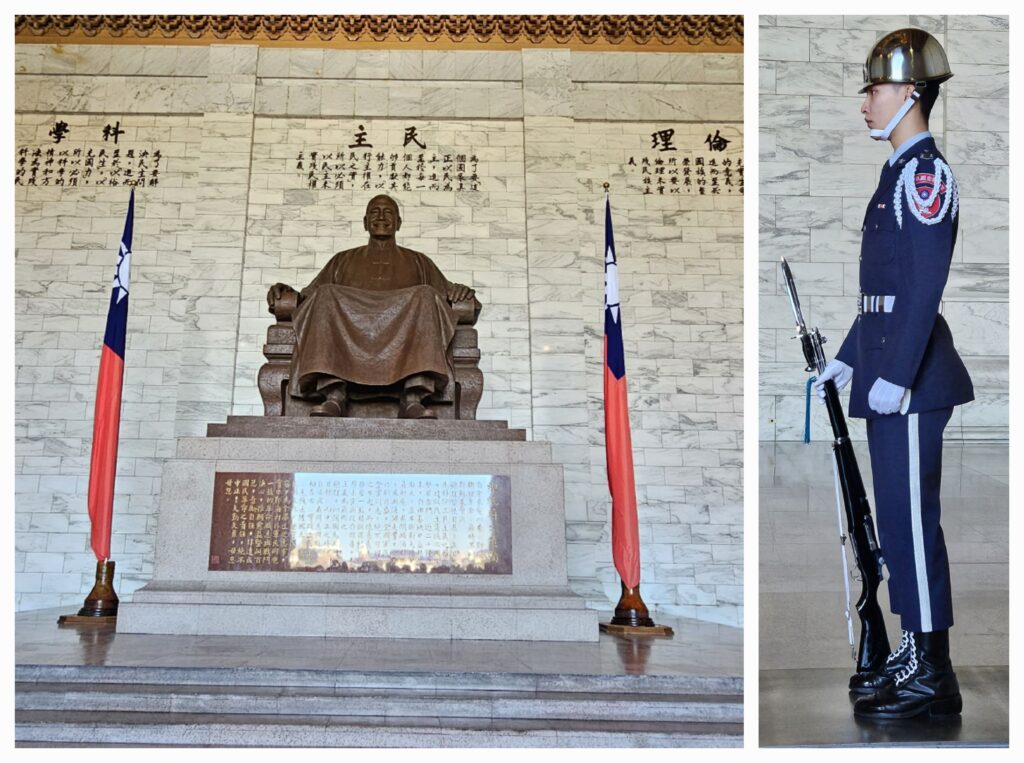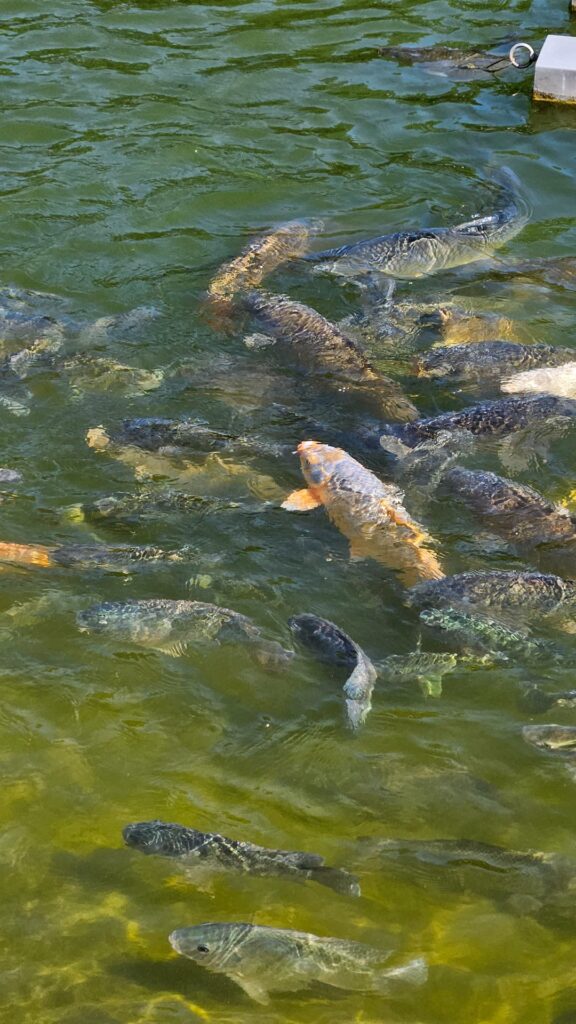
DAY 1
(Reading time: 7 minutes)
Our journey to Taiwan was partly accidental. One chilly February evening, we were searching for affordable flights to another Asian country and found out that China Airlines was launching a new route in July – a direct flight from Prague to Taipei, the capital of Taiwan. We always try to prefer direct flights as it seems to be the most efficient in all aspects. So, at that moment, the decision was made; we’ll change our plans (from the original Malaysia and/or Thailand) and head to a destination that had never been on our travel list before.
November is one of the best months in Taiwan. The monsoon period, with oppressive heat, heavy downpours, typhoons, and generally unpleasant humid weather, is gone, but temperatures are still quite high (25-30°C) and the days relatively long and sunny.
So, we started right from November 1st, boarded the plane in Prague, and…
…the flight lasted 12 hours. 12 hours! On the bright side, we were well-fed, nobody sat next to us in the window seat (it was probably the only unoccupied seat on the entire plane, imagine that luck!), the screens in front of us worked, the new type of plane (A350-900) was reasonably soundproofed, but still. After lunch, we were obliged to pull down all the windows and sleep. But sleep we did not! We weren’t tired! We wanted to read, look out the window, chat! No. I managed to discreetly pull up the window shade once, and we were treated to a breathtaking view of volcanoes somewhere over Azerbaijan.

The plane was full of Asians, mainly Asian retirees… perhaps taking advantage of the new route to (for them) exotic Czech Republic? I’m always fascinated by how they manage to sleep through the entire flight. They sit down, put on an eye mask, cover themselves with a blanket, and immediately fall asleep. When they wake up, they are well-rested little rays of sunshine ready for new adventures. One might envy them a bit.
However, we survived, and it wasn’t that much of a horror.
Upon arrival, it was seven hours ahead in Taiwan, so we landed at the airport the following morning. Jet lag was still politely silent.
After picking up our luggage, we headed to machines that dispense plastic transportation cards. The most practical thing ever!

In the machines, you can get an EasyCard or iPass for 500TWD (Taiwanese dollars, current exchange rate is approximately 1TWD to 0,032 $) – out of which 100TWD is a non-refundable deposit, and 400TWD is the initial loaded amount for free spending. Both cards are valid throughout the country and can be used for payment on subways, buses, some boats and cable cars, in retail chains like 7-Eleven and Family Mart, as well as in some fast food vending machines.
Equipped like this, we headed to the underground metro MRT towards Taipei. The journey from the airport costs 150TWD, and you can hop on the purple Express Train, which only stops at a few stations, or the blue Commuter Train, which stops everywhere on its route and is naturally slower.
It was still early for hotel check-in, so we paid, left our luggage with them and set out to explore the capital. And why not start with something monumental right away. Go big or go home, right?

The Chiang Kai-Shek Memorial Hall is an impressive hall dedicated to the memory of the former president. Inside, there’s a larger-than-life statue of blissfully smiling Chiang Kai-shek guarded by vigilant young (and somewhat skinny) guards. Their changing, which happens every hour, is a popular tourist attraction, with people waiting up to 15 minutes before it starts. We weren’t prepared for it, so on the first attempt we didn’t see much through the crowds. No worries, there would be plenty more opportunities.

The space inside has several floors and is dedicated to historical events or temporary art exhibitions, and of course, souvenir shops.
The outdoor space is vast and beautifully landscaped.
On the left and right sides, you can see the National Theater and the National Concert Hall, with a huge entrance portal in front. On the very first day (and it will happen more often), we encountered the problem that a photo simply cannot capture the monumentality of some places or statues. Sometimes, you look up and your eyes may pop out of their sockets, and then in the photo it looks somehow “meh.” So, same here – the entire complex, the memorial hall, the portal, the buildings, everything is grand and impressive. You just have to walk around and see it live. 😊

Next to the complex, there’s a hidden little park with a pond and the koi carp. Since we like them (well, Mark more than me), our first Taiwanese coins were spent on feeding them. It was a battle! Who would eat more – the small/fast ones or the big/strong ones? You’ll find out at the end of this article.



And speaking of food, we’re hungry too! Plus, it’s terribly hot and jet lag is starting to kick in. Let’s go have lunch.
CoCo Curry House Ichibanya is one of the factors that significantly contributed to our enthusiasm for our trip to Taiwan. It’s our beloved restaurant chain specializing in Japanese curry, and its discovery in 2018 was accidental (similar pleasant accidents happen to us more often while traveling). You can find out more about it in “Travel journals” from Japan.
With full bellies, we returned to the hotel, where we were finally accommodated and… WHAT? Our room doesn’t have a door to the bathroom. Did someone forget to install it? Or do they think it’s normal? Is it some kind of combo bedroom/bathroom/toilet in one? Bethiletroom? Seriously? But we didn’t feel like dealing with it. Anyway, there was nobody at the reception who could put together coherent sentences in English (yes, at the hotel reception, they mostly knew only individual words in English), so we wouldn’t have achieved anything there. The bed was comfortable (although somewhat short for some non-Asian giants), so we took a few hours of rest.
We spent the first evening exploring Ximending, the district where our hotel was located. An ideal place for people who love “hustle and bustle” – the bustling life of the city, a shopping paradise, various scents of local food, a melting pot of different nationalities.
We ended the day with a banana-chocolate waffle; sweets here are excellent.

-endy-
DONKEY’S SPECIAL:
-mj-